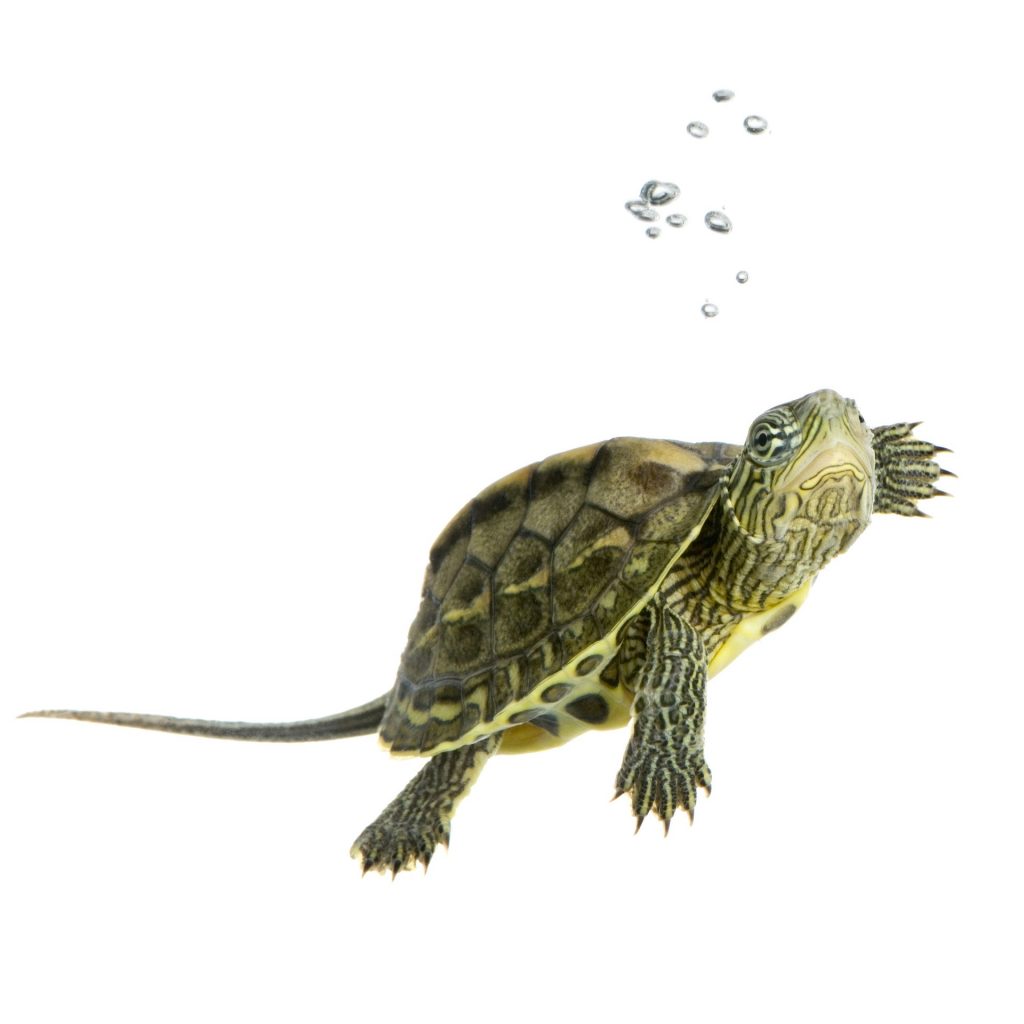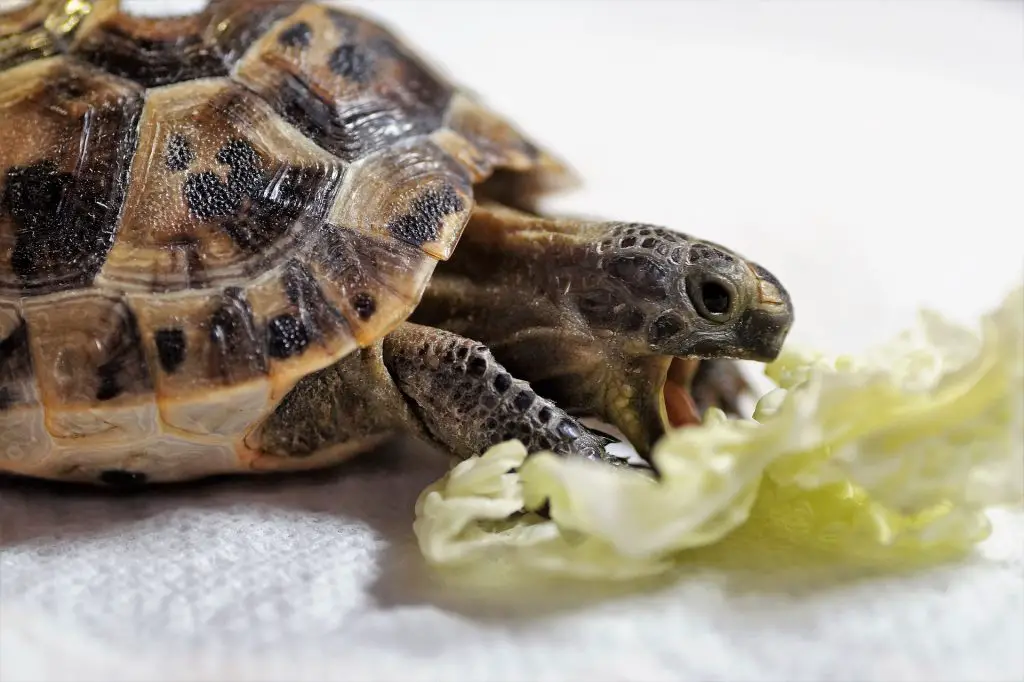Table of Contents
Have you ever wondered what to feed a turtle?
When I was starting, I often asked myself what I could feed my turtle.
I learned that taking care of turtles requires some effort. To care for your turtle, you need to understand what food your turtle needs and how often you should feed your turtle. The exact amounts will vary from turtle to turtle, but don’t you worry.
There are some guidelines to follow and vets also when you are uncertain about how to correctly feed your turtle.
Turtles have varied diets. Let’s have a look at what to feed a turtle.
So, what exactly do turtles eat? Water turtles enjoy some meals like fish, fruits, vegetables, insects and worms. This is generally their essential diet. For them to become healthier, it is worth to give them a diverse diet. This will ensure that the turtles get all the nutrients they require.
Taking care of turtles requires some dedication.
Whenever you give them food, you should make sure to clean the feeding area. This is because leftover food decay, and this is not healthy for a turtle. This, therefore, calls for a separate tank for feeding, which can be cleaned more easily after mealtimes. If you don’t do this be sure to pick out any leftovers and keep the water quality high.
What Do Water Turtles Eat?

You should understand that feeding an aquatic turtle is not the same as feeding a land turtle.
Water turtles spend most of their time in the water, and this means they also feed inside the water.
Water turtles can feed on vegetables and fruits.
Also, provide live food to the turtle. This is an integral part of their diet so be sure to have a regular supply of animal-based food for your turtle, including live feed.
These live foods include crickets, mealworms, waxworms, and other small grubs and insects.
Aquatic Turtle
If your turtle is aquatic it will need to eat small fish such as comet goldfish, mosquito fish, or even aquatic snails. You can get live worms and crickets from your local pet store, as well as pre-packaged dead ones. Feeding your turtle live crickets can seem a little tricky, but it helps to replicate how a turtle would eat in the wild.
Feeding an aquatic turtle small live fish helps to stimulate the turtle and give him some exercise.
Using vegetables that float is preferable to those that sink for an aquatic turtle. If you dust your food with a vitamin supplement, be aware that this can rub off in the water. Using pellets can be a way to tackle this.
What do Do Baby Turtles Eat?
No two turtles will eat the same amount of food, so recommendations on the amount to provide have to be generalized. In that case, it’s important to note that young turtles should be fed often.
Juvenile turtles, a term that most describes baby turtles, need lots of food and need to be fed most often than mature turtles. Feed juvenile turtles every day until they reach at least seven years of age. You may find that their appetite will change when they reach this age, and they will eat less and less. In this case switch to feeding them less often. But always be sure to consult a vet to see if there is any other reason for the diminished appetite. Always remember baby turtles need a lot of special care to keep them alive and healthy. So, here are some pointers on how to feed baby turtles:
#1 First, Feed land baby turtles, a combination of commercially produced food and fresh leafy vegetables, such as lettuce and cabbage, and make sure you chop the food into tiny pieces.
#2 Feed your aquatic baby turtle in a smaller feeding tank. Aquatic baby turtles are sloppy eaters, and they relieve themselves in the middle of their meals. Therefore, they are bound to dirty their aquarium.
#3 Give your turtle feeder fish and crickets for some meals.
#4 Feed baby turtles two or three times a day.
#5 Remember to leave your baby turtle’s food in the tank for half an hour and then remove what’s left. You can feed it to your turtle again later.

#6 Lastly, give baby turtles vitamin supplements, especially vitamin D, which is suitable for shell development. It’s also good to keep baby turtles in the sunshine so that they can get natural vitamin D.
What Do Pet Turtles Eat?
What do turtles eat? Depending on the species, turtles can be herbivores (eating only plants), carnivores (eating only meat), or omnivores (eating both plants and meat).
Pet stores offer a range of turtle food products in pellets, sticks, and chunks, formulated for different types of turtles and providing balanced nutrition with appropriate vitamins and minerals to keep the turtles healthy. However, this type of bland food is not the only thing turtles can eat, and it can be healthier and less expensive to offer turtles a range of fresh foods. Some of the best turtle food includes:
Some fresh foods to feed your pet turtle depending on the species include:
#Protein: Boiled eggs, mealworms, snails, crickets, earthworms
#Vegetables: Corn, beans, beets, carrots, peas, squash, yams
#Greens: Carrot tops, lettuce, collard greens, kale, spinach
#Fruits: Apples, grapes, strawberries, cantaloupe, banana, kiwi, mango, tomato
#Flowers: Geraniums, dandelions, petunias, lilies, carnations
More tips…
In addition to a range of foods and pet store supplements, offering pet turtles an additional source of calcium – necessary for a strong, healthy shell – is also a good idea. Crushed eggshells, oyster shells, and cuttlebone are all fantastic calcium sources that you can add to your turtle’s diet regularly.
One has to remember to feed freshwater turtles proteins in water. These proteins consist of Small fish, crickets, spiders, snails, and crayfish. Large aquatic turtles such as snapping turtles may eat ducks or other birds nesting on the water’s surface.
Here are a few tips on the best foods to feed your pet turtles and what not to feed your turtles.
Fruits and vegetables: Fill up the remainder of your turtle’s daily diet with fresh produce. The best veggies include chopped dark leafy greens such as kale, collard, and mustard greens. Shredded carrots, squash, and zucchini are great foods that turtles can eat, too.
Remember, the age of the turtle matters as juvenile turtles consume more than adult turtles and require more care and attention.
What Can Turtles Not Eat?
Here are some pointers on what not to feed your turtles. First of all, don’t feed them the same food over and over again because they can easily get attached and refuse other foods.
You should also avoid giving dairy products such as milk, yogurt, or cheese to turtles. They cannot digest dairy, and this may cause illness. Offer protein sources only every two to three days to avoid too much protein in the turtle’s diet.
Avoid raw meat or hamburger as it may become tainted and rotten before the turtle eats it.
How Much Should I Feed My Turtle?
Always remember to provide the right amount of food for your turtle.
Here is a rule I implemented when I was a beginner.
Smaller turtles will eat less than larger ones, and this is reflected in the idea that you should feed your turtle about as much food as would fit in his head and neck.
I would recommend feeding adult turtles at most once a day and baby turtles two to three times a day.
What to feed a turtle and last but not least what kind of vitamins provide? Provide plenty of vitamins, here you can read what vitamins do turtles need, mostly inform of food pellets from pet stores. An easy way to provide food for your turtle is to use specially prepared turtle pellets that you can buy in your local pet store. These will be designed to provide the range of minerals and vitamins your turtle needs. If you are trying to replicate how a turtle would feed in the wild, however, the pellets are less authentic than fresh greens and insects. If you use pellets, try to make them part of a balance with fresh food. Think of pellets as forming the only the foundation of the diet.
Always remember to try to provide constant access to water. There should always be freshwater in a bowl that the turtle can easily access and not easily knock over. Take care to make sure that the water stays clean and replace it now and then.
I hope that this post answers your question of what to feed a turtle?


![You are currently viewing What To Feed a Turtle? 6 Easy Steps [with Pictures]](https://turtlepets.com/wp-content/uploads/2019/11/what-to-feed-a-turtle-e1572709451184.jpg)
![Read more about the article Can Turtles And Fish Live In The Same Tank? [Brief Guide]](https://turtlepets.com/wp-content/uploads/2019/09/can-turtles-and-fish-live-in-the-same-tank-2-e1569764520734-300x162.jpg)
![Read more about the article How to Look After a Turtle? [with Pictures]](https://turtlepets.com/wp-content/uploads/2019/09/How-to-Look-After-a-Turtle-e1568880632470-300x162.jpg)
This is a good beginning but there is so much information missing. Each turtle species has specific habitat requirements, turtle care, and food diet
Correct, we will cover all the mention topics in separate posts. Thank you for your comment.
Your website was helpful
Thank you so much!!!